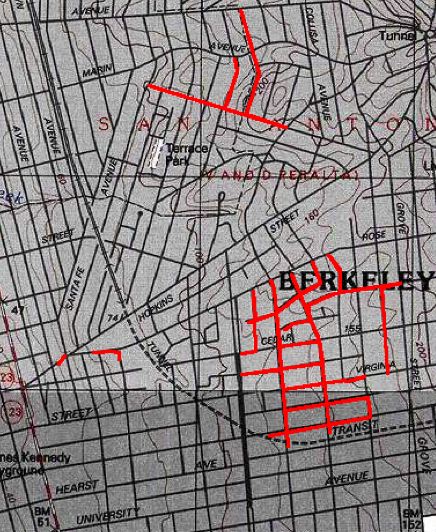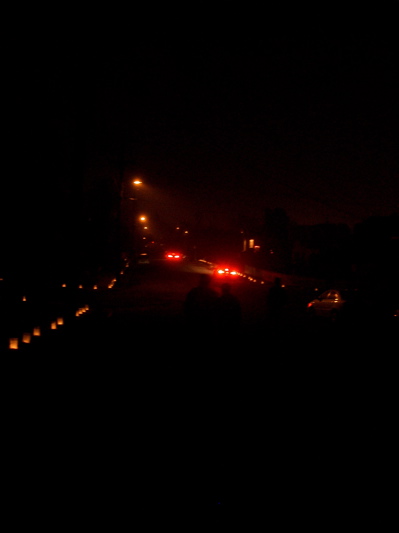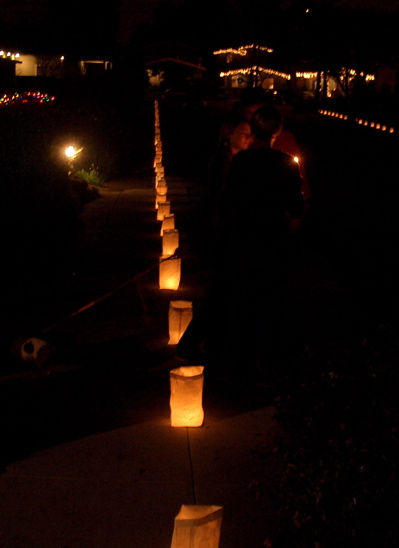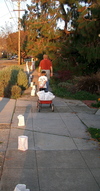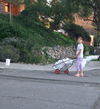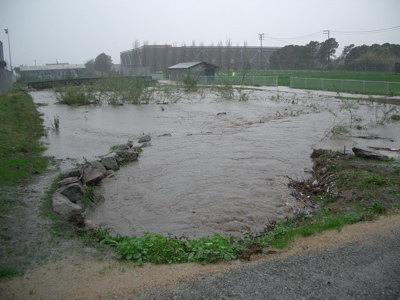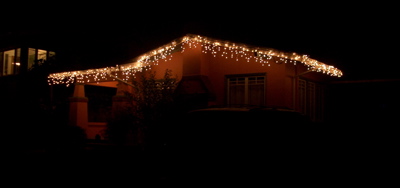Our cat, Gulliver, died last night. It happened both suddenly and unexpectedly — I use both adverbs to appease my memory of an old newsroom colleague who once objected to the use of the first of that pair because “everybody dies suddenly.” Gullie should have a true cat lover write his obit. Instead, he’s got me, the cantankerous one with the unpredictable impatient streak.
Gullie was a big black-and-white tomcat who hailed from San Francisco’s China Basin area, right near the site of the then-unbuilt Giants ballpark. He was a foundling, picked up as a kitten in the spring of 1996 by someone working in my building and deposited for some reason in the first-floor coffee shop. A coworker and his wife adopted him and got him all his shots. They decided they couldn’t keep him, though, because they were thinking of returning to Britain. One of our two cats had recently been hit by a car and killed, and we thought the surviving cat, named Storm, would like a new companion. We adopted the black-and-white kitten and named him Gulliver. The moniker came from the silly codename of the Internet project I was working on at the time (it was meant as a reference to Yahoo!, our imagined competition).
Of course, we were naive in the ways of feline territoriality. Storm hated Gulliver and tried to attack him the minute we brought him in the door. We kept the cats apart, but they never became friendly. Storm was a small, active animal with an enormous degree of predator’s instinct and skill; I used to call her a “one cat ‘Silent Spring’ ” because of her efficiency at clearing the yard of small wildlife, from hummingbirds to the roof rats living in the abundant ivy across our back fence. When he was little, Gulliver liked to chase things and roll around and do the whole kitten act. But he grew fast and seemed to sense that all he had to do to own the place was be there, Storm or no Storm. I thought he was a little dense — more than a little dense, sometimes — but a friend pointed out once that as passive as he looked, he always managed to be in position to get his own way. Storm started spending more and more time with our next-door neighbors, Brett and Christine, whose own cat had recently died. Eventually she lived there pretty much full time, and when they moved up to the Sierra foothills a few years ago, she went with them and has fit right into the much wilder landscape.
By the time that happened, Gulliver had long since settled in. He got big — at one point topping 18 pounds. We fed him generously because he always seemed to have an appetite. What we didn’t know was that he’d become a cadge whose begging some locals couldn’t resist. For instance, Gullie would cross the street early every morning just in time to catch our neighbor Bob making his daily tuna sandwich. The cat convinced Bob and family each day that he was starving, so they took pity on him and gave him their leftover tuna.
Of his habits, well, everyone thinks their pet is out of the ordinary. But: Storm would confront a closed door as an object of terror. For Gullie, it was a chance to show his cleverness: If a door was closed but unlatched, he could always figure out how to open it, by pushing or pulling it open with a paw. He was big into stretching out on his back or side in the sun with his legs fully extended; he’d look for rough places on the sidewalk to scratch his own back. He had a comical habit of lying on ledges and letting his front legs hang straight down. He also had a penchant for enclosed spaces — occasionally deciding to camp out in a box or a closet or a shelf and disappearing for hours. A favorite sentinel spot: atop our cars. And not to be forgotten is what I called his suicide dash: He’d spot us driving up the street toward the house, then bolt across the driveway just in front of the car. Not sure what he got out of it, but he managed to both alarm and entertain us with this odd welcome home.
But mostly he just liked to be wherever the people were. He seemed capable of spending hours parked in Thom’s or Kate’s laps, or on the couch with us while we watched the tube, or in bed. His general proclivity for just hanging out led Thom, who had become his principal human, to deliver the bottom line: “Gulliver, you’re a chill animal.”
Gulliver’s growth toward Falstaffian proportions drew the vet’s notice several years ago. Not only was he getting super-sized, the doctor told us he detected a murmur when he listened to Gullie’s heart. So he got put on a diet, which took us some time to figure out; we also got the neighbors to knock off feeding him, no matter how desperate he looked. Gradually, he went from 18 pounds to 16, then 15. Still big, but not as big. He ate all of what we gave him (the same diet cat food pellets day after day after day). Then this fall something changed. He seemed to lose his appetite and wouldn’t touch his usual food. He started losing weight — down to 14, then 13, then 12 pounds. Sometimes he didn’t seem to be able to keep food down. He had a seizure of some kind in early November. After that, he got what amounted to cat intensive care: The vet ran blood tests, which came back normal, and a chest X-ray, which didn’t. The pictures showed Gulliver had an enlarged heart, though the doctor was quick to say that didn’t necessarily have anything to do with Gullie’s weight loss or mean that he was in any immediate danger. But over the last several weeks, all the general symptoms of malaise and poor appetite continued. The vet saw him again last week but was still puzzled. He prescribed a diet of cooked ground turkey — genuine people food — and gave him a cortisone shot to try to calm down whatever digestive problem he was having.
Then yesterday, Christmas Day: Gulliver seemed OK early, but as the day wore on his energy and appetite vanished and his breathing seemed a little labored. We decided we’d go to a new vet first thing in the morning, but he got worse throughout the evening. Around 11, when it was obvious he was starting to have extreme difficulty breathing, we called the local emergency animal hospital and they told us to come right in. We did, and the tech who saw us walk in from the rain took one look at the cat and said, “I need to take him right away.” A few minutes later, the staff vet came out and told us that Gullie’s heart was failing and that his lungs had filled with fluid. Amazing what can be done when you have a little money and the willingness to spend it: They injected that cat with a diuretic to try to clear his lungs and applied some nitroglycerine paste to help dilate his arteries, both steps intended to ease the load on his heart. Then he was put into a little oxygen chamber to aid his breathing. The vet came out to the waiting room three or four times to tell us what steps were being taken. After no more than half an hour he told us it was apparent that nothing short of what he described as heroic intervention — essentially putting the cat on a ventilator until his condition stabilized — would keep him alive much longer; and even then, he cautioned that the odds of making it past the first very expensive 24 hours were probably 50-50.
(In the meantime, a younger couple had appeared at the hospital with their dog, a pug named Oscar. “Oh, my god, this is the worst Christmas ever,” the woman said. “He fell off our bed on his side and he just freaked out.” “Yeah, he like spontaneously took a shit when he hit the floor and started shaking.” The dog was still wobbly and apparently couldn’t stand on its own. The doctor said he’d check to see if Oscar had suffered a seizure.)
I went back to take a look at Gullie the last time the doctor spoke to us, because the alternative to aggressive intervention was to euthanize him. He was gasping for breath in this little Plexiglas-fronted box. I went out and told Kate that I thought we needed to let him be put to sleep, and she agreed. I went back to look at him one more time and told the doctor what we wanted to do. “OK — that’s a reasonable decision,” he said. As often as he and his staff see this kind of thing, they actually looked a little stricken.
So we signed a paper, and a few minutes later they brought Gullie out to us in his cat carrier, wrapped in a towel. He was still warm. Poor cat. Poor buddy. So now, while we have what looks like a dry afternoon, we’ll go out and bury him in our backyard, along with the budgie (a mean one called Rosie), the rat (Silly), the cat (Jordan, Storm’s brother), and the rabbit (Night).

